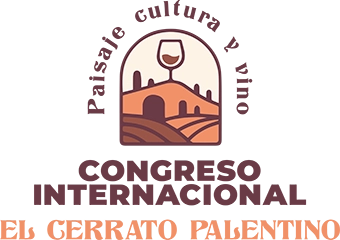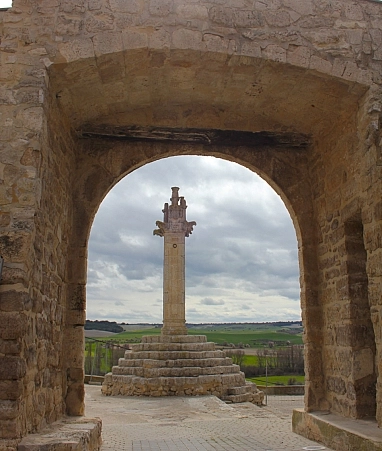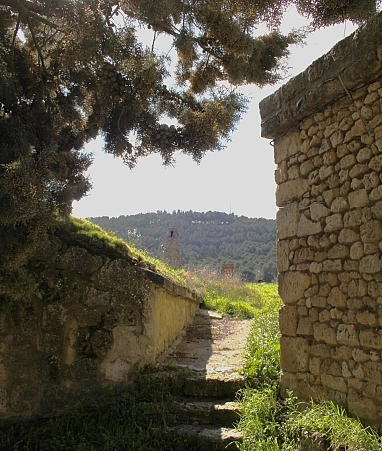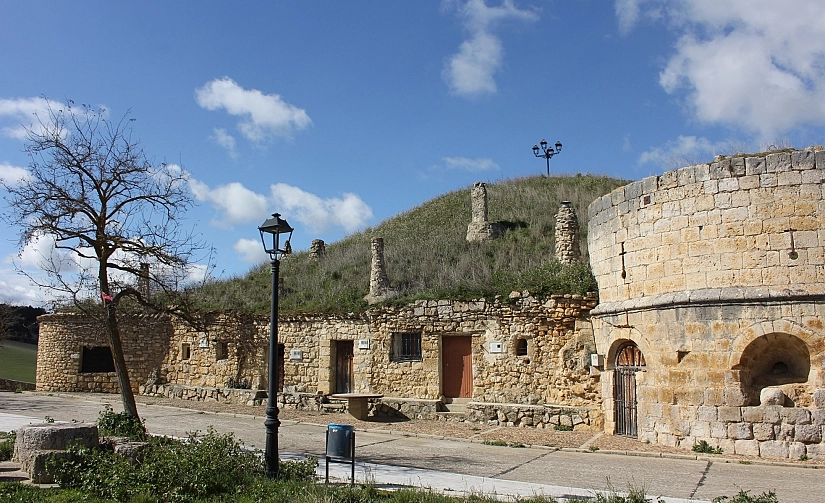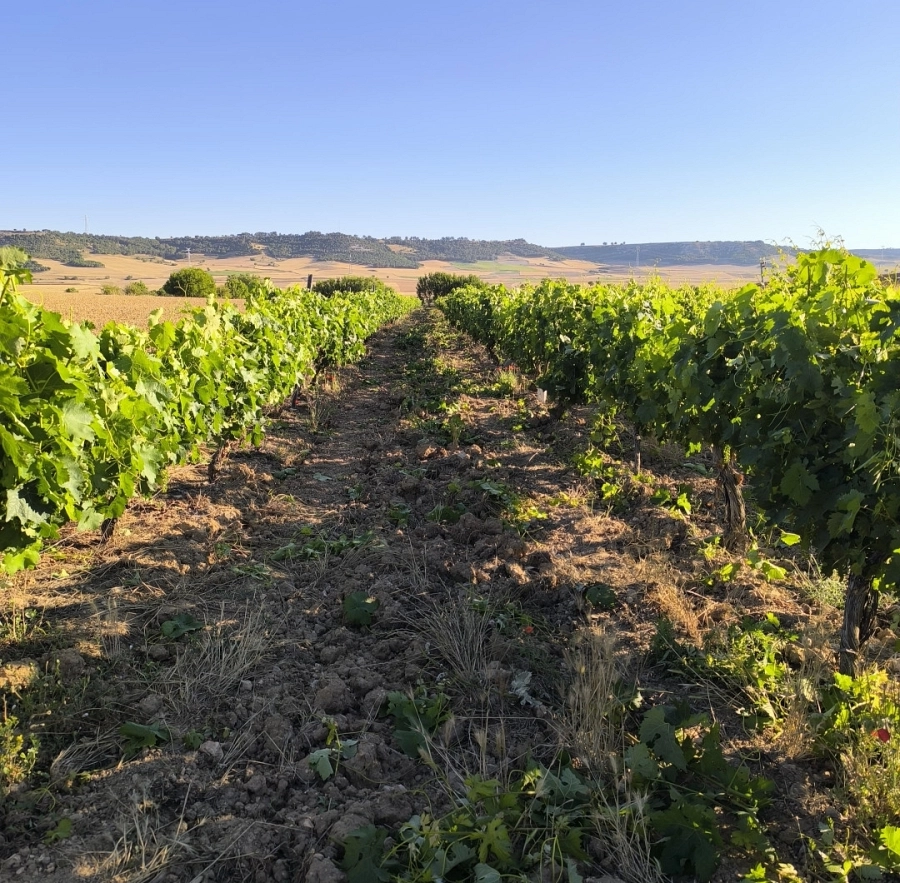The Cerrato: Landscape, culture, heritage and wine
The Cerrato Palentino is a land of wide, rolling landscapes, defined by limestone plateaus rising above fertile valleys and by gentle hills and slopes linking one area to another. Over millions of years, the erosion of clay, gypsum and limestone has shaped this scenery, creating a rich mosaic of contrasts.
Cereal and sunflower fields stretch across the plateaus, while the more humid and fertile valleys are home to vegetable gardens and vineyards. Vegetation grows mainly along riverbanks and in areas less suited to farming, with holm oaks, Portuguese oaks and patches of scrubland completing the scene.
The villages, mostly located in the valleys, preserve their traditional architecture and a remarkable Romanesque heritage, alongside ethnological elements such as mills, dovecotes and—most distinctively—the traditional wine cellars carved into the hillsides, which today stand as one of the most recognisable features of the cultural landscape of the Cerrato.
Its culture is deeply rooted in a long history shaped by agriculture, wine and community life. From the ancient Vaccean people and the Roman period to the Middle Ages, this land has always been closely linked to farming. Wheat and vines, together with local fairs and markets, shaped a rural way of life that endured for centuries.
Cultural and natural heritage
This heritage is complemented by a rich cultural legacy: traditional stone and adobe architecture, numerous Romanesque monuments, dovecotes, mills and, above all, the iconic hillside wine-cellar quarters, which embody the winemaking identity of the region. Today, this cultural and landscape heritage is recognised as one of the Cerrato’s greatest assets — key to its revitalisation and future vision, and a defining element that makes it a truly unique territory.
The area also boasts remarkable natural heritage. Its plateaus, valleys and riverbanks form a mosaic of ecosystems where holm oaks, Portuguese oaks and steppe birds thrive, together with highly valuable ecological areas included in the Natura 2000 network. The historic network of drove roads and livestock trails, stretching over 600 km, serves both as an ecological corridor and as a resource for enjoying the landscape. To this, a historic milestone has recently been added: the reintroduction of the Iberian lynx in 2025.
Wine, Identity and the Future
Since the Middle Ages, vines have been a fundamental part of both rural and urban life, to the point that Palencia even introduced laws to protect its wine from outside competition. During the 18th and 19th centuries, the Cerrato experienced a period of great prosperity, with thousands of hectares of vineyards in places such as Baltanás, Cevico de la Torre and Dueñas, and a flourishing wine trade that even reached France thanks to the arrival of the railway. Although phylloxera in the late 19th century and the agricultural changes of the 20th century led to decline, the region’s winemaking identity never disappeared.
Today, even though the area under vine is smaller, wine remains a defining feature of the Cerrato’s identity. This is reflected in the remarkable survival of its traditional underground wine-cellar districts, true gems of vernacular architecture. The region preserves more than 40 such complexes — including those in Baltanás, Torquemada and Astudillo, declared Sites of Cultural Interest — which blend historical, architectural and landscape value. These cellars were not only used for making and storing wine; they were also places for social gatherings, celebrations and community life.
Today, a new generation of winegrowers and small wineries is reviving this tradition, linking it to wine tourism, sustainability and a renewed sense of pride in the land. In this way, the Cerrato has reinvented its winemaking heritage, turning its wine and its cellars into a living cultural landscape that connects past, present and future.
